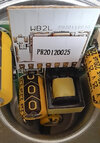Hi
I am from India, in this UK forum, because I this is really the first active DIY forum I could find outside reddit . I hope this is okay
I want to replace a LED tubelight in my room 3mx4m with a LED strip, that I can shape around and get a similar light output.
LED is a 20W philips tubelight.
But it seems a Philips 18W LED tube-light is much brighter than a equal or higher wattage LED strip. Is this true ?
If so that could be either due to poor quality led strips ? or maybe by not supplying enough power..
Second the lumen calculations seem off. This item 10m led strip - total 720 smd 3014 bulbs. According to wikipedia that's 10lumen/bulb. This would mean its 7000 lumens!! 3 times bright than my tubelight . But the pictures and comments make it seem so much dimmer.
Product: https://www.amazon.in/Murphy-3014-72-Waterproof-Strip-Light/dp/B09HWQZZN2/
I am from India, in this UK forum, because I this is really the first active DIY forum I could find outside reddit . I hope this is okay
I want to replace a LED tubelight in my room 3mx4m with a LED strip, that I can shape around and get a similar light output.
LED is a 20W philips tubelight.
But it seems a Philips 18W LED tube-light is much brighter than a equal or higher wattage LED strip. Is this true ?
If so that could be either due to poor quality led strips ? or maybe by not supplying enough power..
Second the lumen calculations seem off. This item 10m led strip - total 720 smd 3014 bulbs. According to wikipedia that's 10lumen/bulb. This would mean its 7000 lumens!! 3 times bright than my tubelight . But the pictures and comments make it seem so much dimmer.
Product: https://www.amazon.in/Murphy-3014-72-Waterproof-Strip-Light/dp/B09HWQZZN2/
Last edited:


